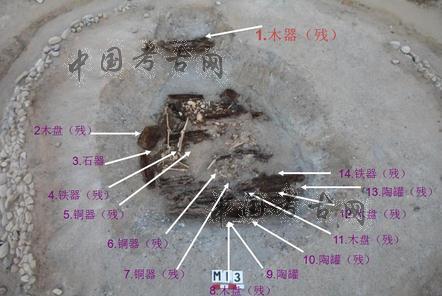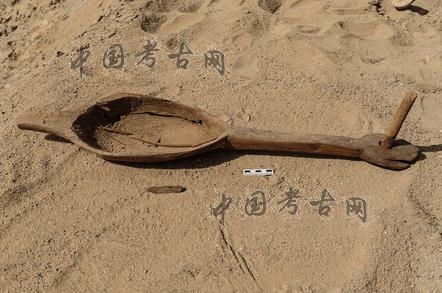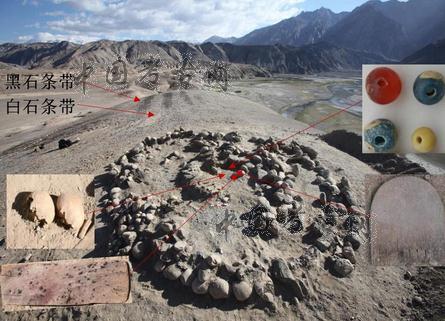PART.2
The excavation results are as follows:
One, nearly one hundred artifacts were unearthed, including a wooden fire altar, which was the most important discovery. Although its circle hole was burnt intensely, its external structure was intact and unmarked. The burning was internal to the altar, caused by 15 black stones that were intense heated before place into the altar. This appears to be the earliest discovery of a Zoroastrian fire altar worldwide to-date.

Wooden fire altar from tomb M12
Two, despite the plundering of tomb M1 by grave robbers, scientists were still able to extract important information from the burial chamber’s remaining artifacts. Preliminary data of ESR dating from testing of the remaining artifacts done at beta lab in the United States provided a conservative estimated date of 2500 years BP.
Three, an unearthed bamboo comb and glass beads suggest that substantive exchange between the Eastern and the Western cultures separated by thousands of miles existed.

Artifacts distributed in M13
Four, copperwares such as copper mirrors, bracelets, and copper baubles were found. Bracelets like the ones found here have been found in other Xinjiang tombs from the same periods a relatively common grave good. The perforated short-handled copper mirrors are a characteristic of contemporary West Asian cultures of that time.

Musical instrument from M14
Five, there are only two completely intact human skeletons, mostly secondary burials consistent with Zoroastrian terrace-exposed burials. There were incomplete remains of seven people, which included six women. M10 served as the tomb of a young child with huge form and particular structure. The child’s sex could not be determined using anthropological sexing methods. Preliminary data from skull measurements indicates a link between the skeletal remains and modern Tajik people.
 Artifacts distributed in M1
Artifacts distributed in M1
Six, this is the first discovery of traces of Zoroastrianism on the Eurasian continent dating back to approximately 2500 BP; the scale of the discovery is huge, the surface phenomena is distinct, geographical distribution is particular, and this phenomenon appears only on the Eurasian continent. Persia and Central Asia have been considered as two possible origins of Zoroastrianism. This discovery supports the argument for a Central Asian origin of Zoroastrianism. Furthermore, it’s possible the religion arose on the periphery of the Tarim Basin or directly in the Pamir high plateau (on the border between Xinjiang and Tajikistan). (Translator: Grace Warren)